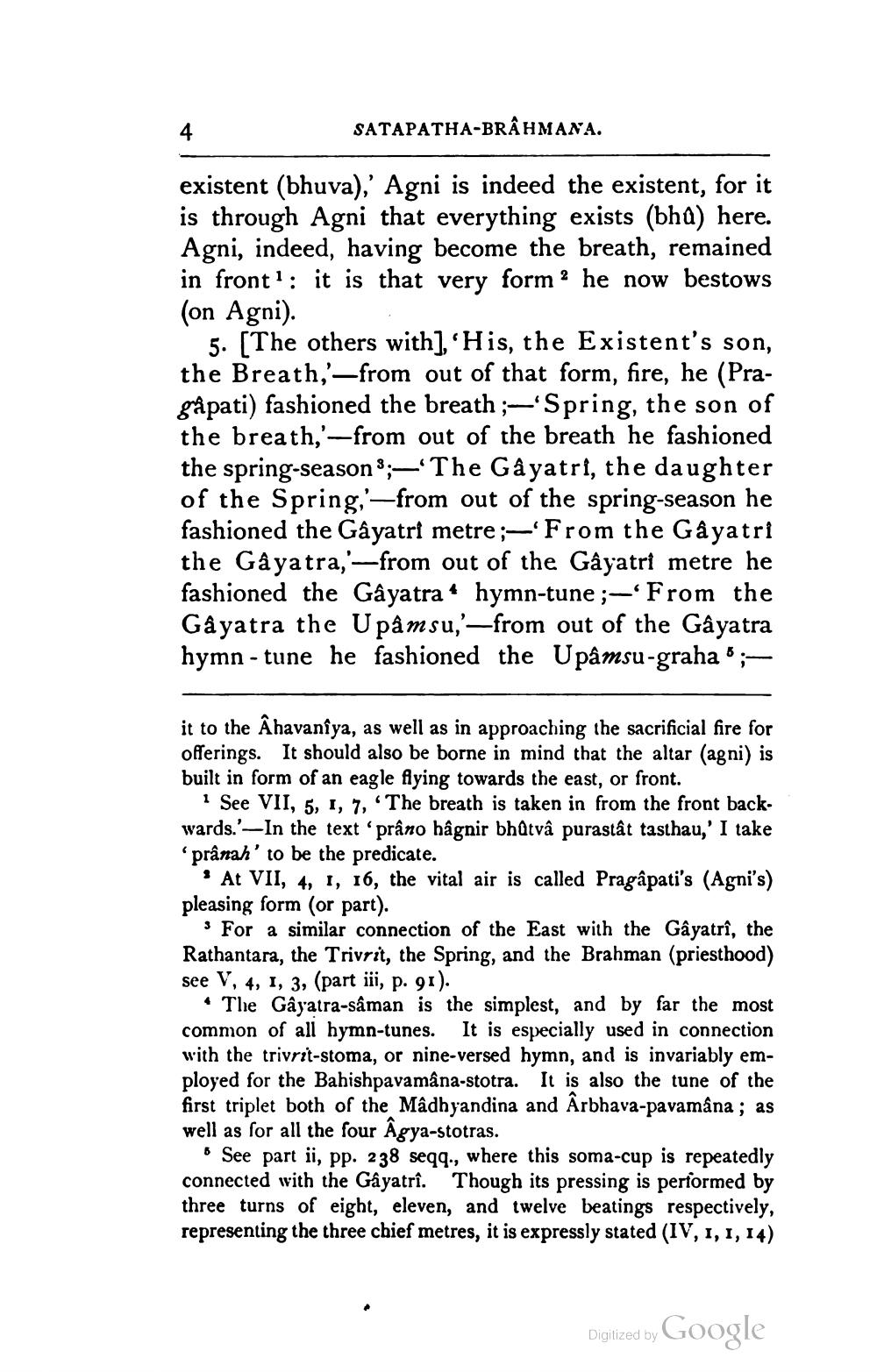________________
SATAPATHA-BRÂHMAXA.
existent (bhuva), Agni is indeed the existent, for it is through Agni that everything exists (bha) here. Agni, indeed, having become the breath, remained in fronti: it is that very form ? he now bestows (on Agni).
5. [The others with],'His, the Existent's son, the Breath,'—from out of that form, fire, he (Pragåpati) fashioned the breath ;- Spring, the son of the breath,'—from out of the breath he fashioned the spring-season 9 ;— The Gayatri, the daughter of the Spring,'—from out of the spring-season he fashioned the Gayatri metre;- From the Gayatri the Gayatra,'—from out of the Gâyatri metre he fashioned the Gâyatra + hymn-tune;- From the Gayatra the Upåmsu,'—from out of the Gayatra hymn - tune he fashioned the Upâmsu-graha 5 ;
it to the Ahavanîya, as well as in approaching the sacrificial fire for offerings. It should also be borne in mind that the altar (agni) is built in form of an eagle flying towards the east, or front.
See VII, 5, 1, 7, 'The breath is taken in from the front back. wards.' - In the text 'prano hâgnir bhQtva purastat tasthau,' I take prânah' to be the predicate.
' At VII, 4, 1, 16, the vital air is called Pragapati's (Agni's) pleasing form (or part).
For a similar connection of the East with the Gayatri, the Rathantara, the Trivrit, the Spring, and the Brahman (priesthood) see V, 4, 1, 3, (part iii, p. 91).
• The Gayatra-sâman is the simplest, and by far the most common of all hymn-tunes. It is especially used in connection with the trivrit-stoma, or nine-versed hymn, and is invariably employed for the Bahishpavamâna-stotra. It is also the tune of the first triplet both of the Mâdhyandina and Arbhava-pavamâna; as well as for all the four Âgya-stotras.
See part ii, pp. 238 seqq., where this soma-cup is repeatedly connected with the Gayatrî. Though its pressing is performed by three turns of eight, eleven, and twelve beatings respectively, representing the three chief metres, it is expressly stated (IV, 1, 1, 14)
Digitized by Google




